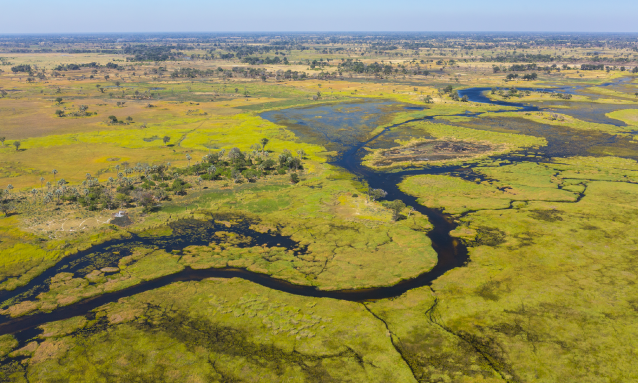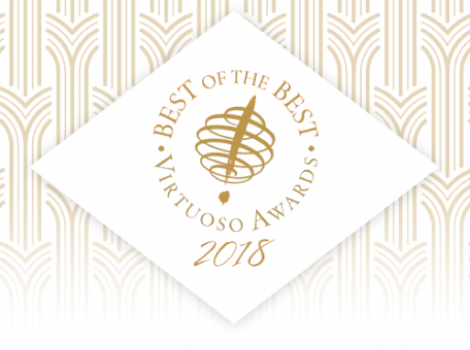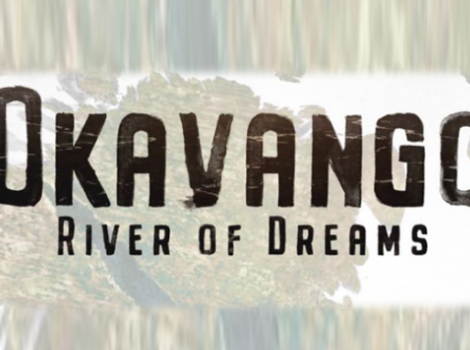
Botswana puts its animals before its tourists, creating, in turn, a better experience for everyone.
Botswana is playing the long game. My safari guide, a member of the Bayei tribe named Meshack, doesn’t use those exact words. But every strategy and statistic he cites, as I pepper him with questions about what makes his country unique, say it for him. I’m in Botswana with The Luxury Safari Company for eight days, and poor Meshack has me for three of them.
The first time I meet Meshack, he is chasing a herd of impalas off a remote runway. I’m disembarking from a small plane people back home would call a puddle jumper. The runway belongs to Jao Camp, a five-star property built on stilts in the Okavango Delta.
“I think they’re trying to commit suicide.”
Meshack laughs as he says it. But I can tell he’s perplexed, perhaps even bothered, by the impalas’ behaviour. Fortunately for these antelopes — nicknamed “the McDonald’s of the bush” because they epitomise fast food — Jao Camp isn’t a revolving door destination. A plane, bringing in new staff or guests, might only touch down every other day. Helicopter Horizons, who specialise in heli-safaris, might land twice a week.
After all, there are only two luxury villas and five suites at Jao Camp, and there’s no thru traffic. It’s at least four hours to the nearest hospital, assuming the roads are dry enough to drive on. Most of the year they’re submerged.
Water levels in the Okavango Delta are currently the highest they’ve been in five years. For camps and visitors like me, that’s a good thing. It means increased access — Meshack and I troll the marsh-like landscape in traditional mokoro canoes — and better wildlife sightings. Not only is Botswana home to Africa’s famous big five, it also boasts more elephants than any other country in the world. At last count, there were more than 130,000. Yet only 2.3 million people live in this landlocked nation nearly the size of Texas. That’s one elephant for every 18 residents.
Later that week, my massage at DumaTau, the newest luxury camp from Wilderness Safaris, is interrupted by a pair of young elephants. Camp staff affectionately refer to them as “ellies.” My masseuse explains it’s a brother and sister who like to hang out by the spa. They’re playing, or perhaps roughhousing is a better term. They leave a trail of broken branches and trampled bushes in their wake.
Later, while cooling off in the pool at Little DumaTau — a new concept catering to families or celebrities who want a private mini-camp to themselves — I watch a herd carefully cross the croc-infested river. They lift their tails out of the water as they go. You know an elephant has had an encounter with a crocodile when it’s missing its tail. Eventually, they arrive on the same island where we hear a lion moaning the next morning. The lions here — and there are so many, 14 are seen on my last day — are good swimmers. They have to be.
If the delta, Botswana’s top tourist attraction, is the country’s beautiful, then the Kalahari Desert, in the south, is the country’s bold. It’s so arid in this endless sea of sand and grass that the staff at Feline Fields, a luxury lodge best described as being in the middle of nowhere, tell me they often catch the ellies drinking from the property’s swimming pools. In Botswana, where most of the animals aren’t fenced in like they’d be in national parks and on conservations in neighbouring countries, it’s not uncommon to see wildlife in camp.
One morning, Meshack and I head to Jao’s sister camp to search for a leopard who birthed her cubs in one of the bathrooms. They’re only a few weeks old. We don’t find them, but we do cross paths with a very vocal male lion. Meshack reckons he’s calling for his brother, Scarface, or the pride of females known to frequent this area. Restless, he roams and releases sad, guttural mews. His nose is lifted to the wind, hoping to catch a whiff of companionship. We don’t hear any response. He’s alone for the two hours we follow him. At one point the lion gets so close to our vehicle I could reach out and run my fingers through his mane. To this 500-lb. king of the delta, and most of the animals living here, humans are one with the vehicle they’re in (unless they stand up or make sudden movements). Neither predator nor prey, vehicles are a minor threat, best ignored. It’s impossible not to notice we’re the only vehicle for miles. I quickly learn it’s not just because of the pandemic.
Since the birth of Botswana’s tourism industry in the 1990s, the country has prided itself on low-volume, high-cost safaris. Here, crowds don’t exist, but the $25,000 safari does. Most camps are five-star, and they’re few and far between. Feline Fields’ closest neighbour is so far away I’d have to fly to get there.
This approach to high-income, low-impact tourism is unique to Africa. Botswana, which only has 11 people per square mile and is one of the least densely populated countries in the world, learned from the mistakes of more popular safari destinations like Kenya and South Africa. These countries’ profit-driven goals were to get as many tourists as possible. The result is an experience that can feel a bit like visiting Disney’s Animal Kingdom.
A safari in Botswana costs substantially more. But because of this barrier to entry, there are fewer tourists. There’s also less infrastructure. As a result, Botswana still looks and feels as wild as Africa gets. For example, you’re not going to find many paved roads. I’m told the Government knows that good roads lead to speeding, which leads to precious wildlife being hit. On the plus side, you’re not going to have to jockey for position, in a traffic jam of Land Rovers teeming with tourists, to get the perfect photo of wild dogs hovering over a fresh kill. You’re also probably not going to see a wild cat sporting a collar. For the most part, Botswana leaves its wildlife alone. The biggest exception to this rule is the rhino.
In 2019, nearly 100 rhinos were brought from South Africa to Botswana for safekeeping. It wasn’t the first rhino relocation of its kind. Unfortunately, poachers are still a threat in Botswana. Each rhino’s location is closely monitored and kept under such tight wraps that my guides get noticeably uneasy when I ask about them. My guides are happy, however, to sing the praises of their government — at least relative to their neighbouring countries’, who are rife with civil unrest, corruption and inflation. As the continent’s longest continuous multi-party democracy, Botswana is one of the most politically stable countries in Africa. Its army fights poachers, not rebels. Its people, many of whom speak English so well they could teach it, are the warmest I’ve met on my travels in Africa. Even the bushmen, who I meet in the Kalahari Desert, seem content to spend a chilly morning barefoot and half-naked, setting handmade traps and foraging for roots. I learn some of the plants are thought to be aphrodisiacs, others are thought to cure cancer.
If you’re dying of cancer and your goal is to see the big five before you die, go to South Africa’s Kruger National Park. That’s what Meshack tells me when I ask about the likelihood of me seeing the big five on my eight days in Botswana. I’m bummed at first, but I appreciate his honesty. Slowly, I’m realising that Botswana doesn’t care if I see the big five while I’m in town.
If it did, more animals would be fenced in, more roads would be paved, and the location of the rhinos would be public knowledge. Frankly, Botswana doesn’t care if any tourist sees the big five. It cares more about the big five and the welfare of all its wildlife.
In the end, I leave Botswana having only checked buffalo, lions and elephants off the list. Still, I’m not disappointed. Each of those sightings felt far more intimate than what I’ve experienced on game drives elsewhere in Africa. Knowing these animals are truly wild — uncollared and free to come and go as they please — makes me value my time with them even more. Plus, not seeing the rhino and leopard, which both live in Botswana but are just on the more elusive side, gives me a good excuse to return.
By Katie Jackson
Source: http://www.travelandleisure.com/trip-ideas/safaris/botswana-luxury-safari-company



